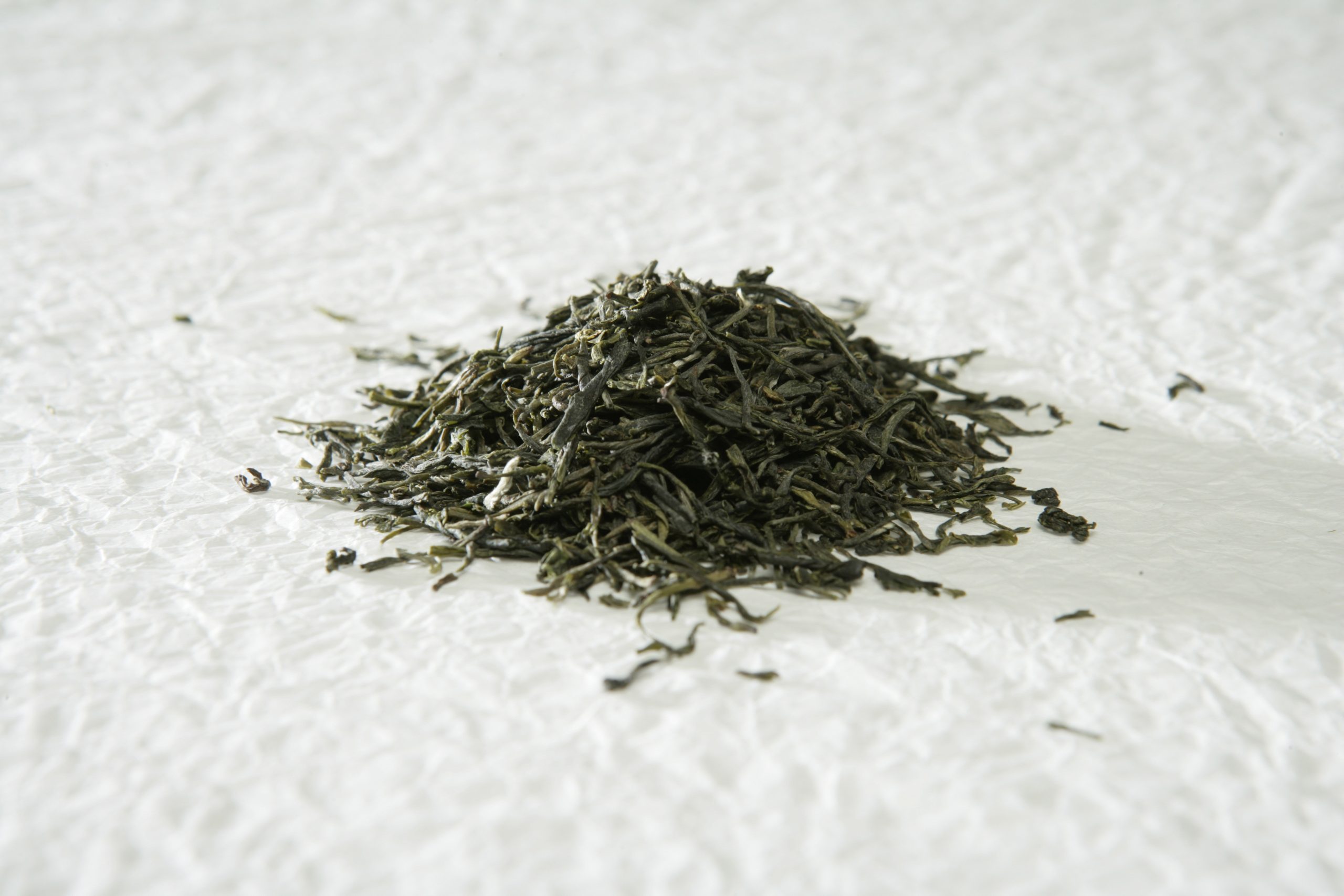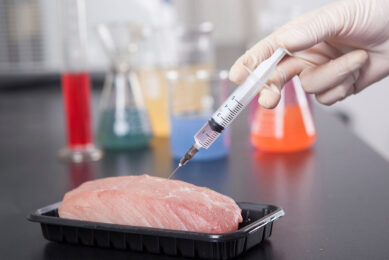A natural antioxidant boost for broilers

In a recent trial, supplementation of decaffeinated green tea in the diet was shown to improve the antioxidant status and immune titres of broiler chickens.
Oxidative stress constitutes an important chemical mechanism that leads to biological damage, which in turn can affect growth and production in farm animals. Broiler chickens are frequently exposed to a number of stressors including transportation, malnutrition, disease challenge and overcrowding. These stressors are known to increase the production of reactive oxygen species (ROS), which are thought to adversely affect growth performance, decrease immune response, increase lipid peroxidation and lower meat quality. Synthetic antioxidants such as ethoxyquin, BHA (butylated hydroxyanisole) and BHT (butylated hydroxytoluene) are commonly used as effective technical additives in poultry diets in order to increase the stability of feed. Nevertheless, such substances are thought to have biological effects in vivo, and their toxicological safety is a matter of much debate. This has driven the search for natural compounds that could replace synthetic antioxidants in animal feed, particularly those providing additional zootechnical benefits.
Green tea (Camellia sinensis) is regarded as a valuable source of natural antioxidants. The main flavan-3-ols present in green tea include catechin, epicatechin, gallocatechin, epigallocatechin, gallocatechin gallate, epicatechin gallate, and epigallocatechin gallate. Epigallocatechin gallate, one of the main polyphenolic constituents of green tea, possesses the highest antioxidant capability among the flavan-3-ols found in green tea (Figure 1). Furthermore, the polyphenols found in green tea extracts are thought to provide health benefits beyond anti-oxidative mechanisms. For instance, green tea polyphenols are thought to interact with proteins and phospholipids in the plasma membrane, regulating signal transduction pathways, transcription factors, DNA methylation, mitochondrial function and autophagy.
Study to explore effects in broilers
A trial was conducted to explore the effect of feeding graded concentrations of decaffeinated green tea extract (GTE; 125, 250, 500, 1000, and 2000 ppm) on the growth performance, serum lipid profile, antioxidant status (liver glutathione-reduced levels and thigh muscle malondialdehyde), and humoral immune response against Newcastle disease virus vaccines of broiler chickens from hatching to 42 days of age.
The 42-day trial was conducted at the Animal Research Unit, College of Veterinary Medicine, Zagazig University, Egypt. In a complete random design, 252 unsexed day-old broiler chicks (Ross 308) were assigned into seven dietary treatments. Each treatment was subdivided into six replicates of six birds each. The results of broilers fed on GTE were contrasted to those fed on butylated hydroxytoluene (BHT; 125 ppm) or unsupplemented control. Growth performance parameters were calculated for each rearing period, including average daily gain (ADG), average daily feed intake (ADFI) and feed conversion ratio (FCR). The diets utilised in this trial were based on corn, soybean meal and corn gluten meal, and were adjusted in a three-phase feeding programme (starter, 0-21 d; grower, 22-35 d; finisher, 36-42 d). The diets were in mash form, offered ad-libitum and did not contain synthetic antimicrobial drugs.
Antioxidant boost
Inclusion of decaffeinated green tea extract (GTE) and butylated hydroxytoluene (BHT) in the experimental diets did not significantly affect the measured growth performance parameters (BW, ADG, ADFI and FCR) throughout the experimental periods. Nevertheless, a linear trend was observed in the FCR in diets containing an increasing amount of GTE. There were no significant differences in the measured serum lipid parameters between broilers fed on the control diet or diets supplemented with GTE or BHT.
Figure 1 – Chemical structure of epigallocatechin gallate, a powerful antioxidant found in green tea.

Glutathione-reduced is one of the most important non-enzymatic antioxidants inside living cells, and its level can be used as an indicator of antioxidant status in tissue. A positive improvement in the glutathione-reduced level was observed in broilers fed on the GTE supplemented diets compared to those fed on the control diet. The best value was observed in broilers fed on a diet supplemented with 500 ppm of GTE, in which the glutathione-reduced level was 55.5% higher than those fed on the control diet. The glutathione-reduced value of broilers fed on a BHT supplemented diet was not significantly different from those fed on the control or GTE supplemented diets.
Malondialdehyde levels in tissue is regarded as suitable indicator of oxidative stress and lipid peroxidation. Dietary intake of GTE or BHT significantly lowered the malondialdehyde level of thigh muscle tissue by levels up to 42.5% in comparison to the control. The malondialdehyde level was not significantly different between broilers fed on diets supplemented with BHT or GTE. A linear effect was observed in the malondialdehyde level in diets containing an increasing amount of GTE.
Immune support
Feeding broiler chickens on diets supplemented with GTE resulted in a significant increase in the antibody titre against Newcastle disease virus vaccines by levels up to 60% (at 28 days of age), and 112% (at 35 days of age) in comparison to those fed on the control diet. The best responses were observed in broilers fed on diets containing 125 and 500 ppm of GTE respectively. Dietary intake of BHT did not result in a significant difference in the antibody titre in comparison to those fed on the control or GTE supplemented diets.
Conclusion
This study highlighted the antioxidant and immunostimulatory properties of decaffeinated green tea extract in broilers when used as a feed supplement. Incorporation of GTE in the feed at levels ranging from 125 to 500 ppm showed a significant improvement in the antioxidant status of the meat as demonstrated by an increased level of glutathione-reduced in liver tissue and decreased level of malondialdehyde in meat tissue. The antioxidant properties of green tea are attributed to its polyphenol content, which scavenge free radicals and subsequently provide cellular protection and delay or inhibit the onset of lipid peroxidation. GTE supplementation was also shown to enhance the immune response and vaccination potency in broilers. Furthermore, growth performance parameters were not adversely affected.
Sourced from: Effect of supplementing broiler chicken diets with green tea extract on the growth performance, lipid profile, antioxidant status and immune response. M. Farahat, F. Abdallah, T. Abdel-Hamid, and A. Hernandez-Santana, British Poultry Science, 57; 5, 2016.
Join 26,000+ subscribers
Subscribe to our newsletter to stay updated about all the need-to-know content in the feed sector, three times a week. Beheer
Beheer









 WP Admin
WP Admin  Bewerk bericht
Bewerk bericht